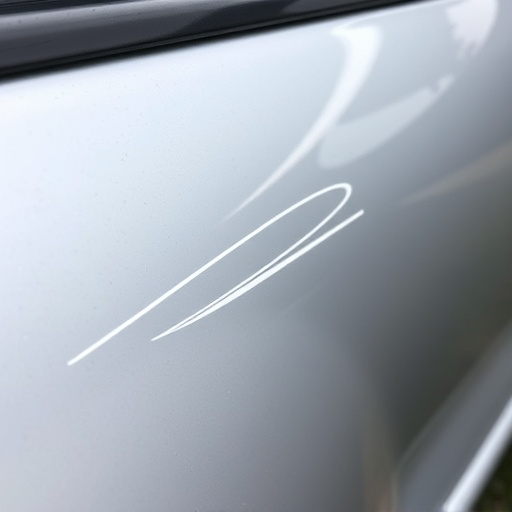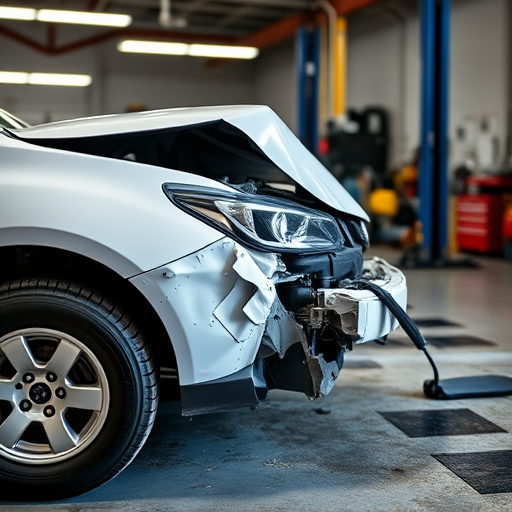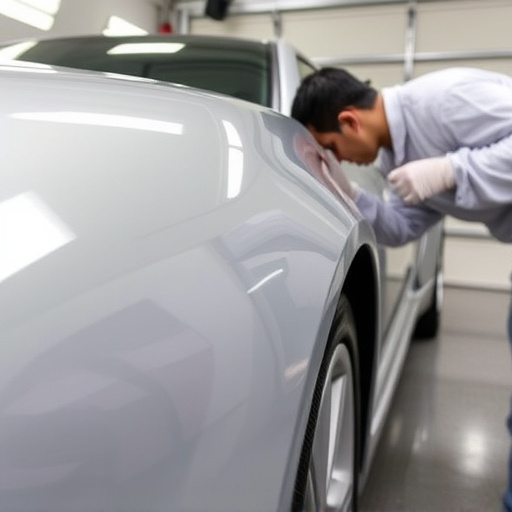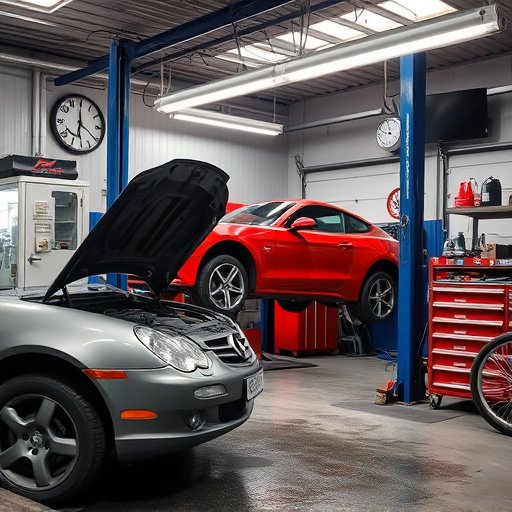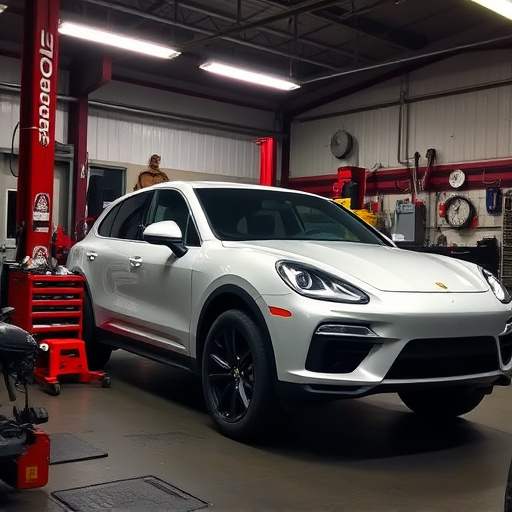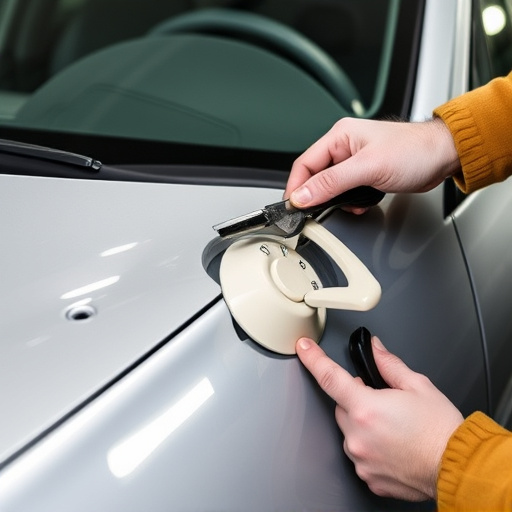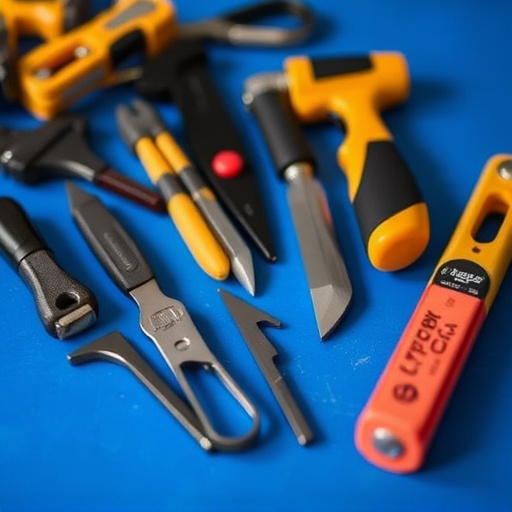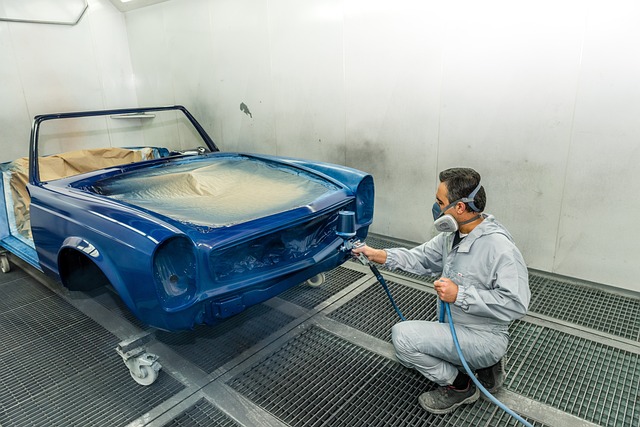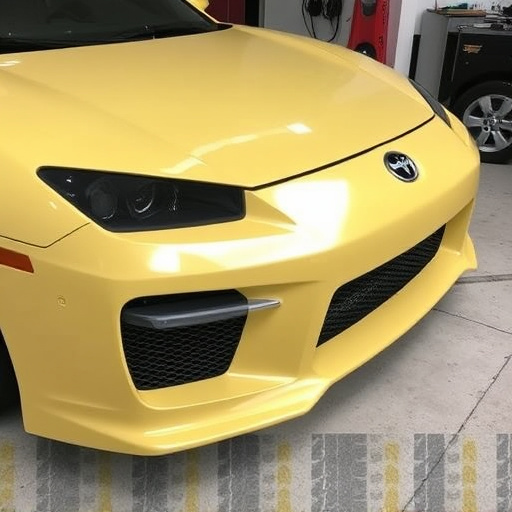Dent repair technologies have evolved dramatically, offering innovative solutions for car body restoration. Advanced methods use specialized chemicals tailored to different dent types, with efficient preparation and application processes. While traditional paint techniques remain cost-effective for minor repairs, modern approaches provide faster turnaround times, reduced waste, and superior aesthetics, making them ideal for complex bodywork damage. These advancements enhance customer experiences at collision repair shops and extend vehicle lifespans.
The world of dent repair has evolved significantly, driven by advancements in technology and materials science. Today, a plethora of innovative tools and techniques are reshaping the industry, offering faster, more precise, and long-lasting solutions than ever before. From traditional paint methods to cutting-edge PDR (Paintless Dent Repair) machines, this article explores the most popular dent repair technologies used today. We delve into the chemical composition of paints, the precision of modern tools, and the role of advanced materials like composite bonding agents and even 3D printing, providing a comprehensive insight into the future of dent repair.
- Paints and Primers: The Foundation of Modern Dent Repair
- – Chemical composition and application processes
- – Advantages and limitations of traditional paint methods
Paints and Primers: The Foundation of Modern Dent Repair

In modern dent repair technologies, paints and primers serve as the essential foundation for restoring vehicles to their pre-incident condition. The process begins with careful preparation of the damaged area, ensuring it’s clean, sanded, and primed to accept new paint seamlessly. This step is crucial in achieving a flawless finish that matches the vehicle’s original color and texture.
Primers play a vital role by providing an adhesive bond between the damaged panel and the topcoat, enhancing durability and preventing future issues. With advancements in auto body painting and collision repair center techniques, today’s paints offer superior coverage, fast drying times, and enhanced resistance to fading or chipping. This not only improves the aesthetic appeal of repaired vehicles but also extends their overall lifespan, making auto repair services more effective and cost-efficient for customers.
– Chemical composition and application processes

Dent repair technologies have evolved significantly, offering a range of innovative solutions for car body repair and fender repair. One prominent technology is the use of specialized chemicals that can effectively restore damaged vehicle bodywork to its original condition. These chemicals are designed with precise chemical compositions, tailored to different types of dents and scratches. The application process involves careful preparation of the affected area, including cleaning and decontaminating the surface to ensure optimal bonding with the repair compound.
Once the area is ready, technicians apply the chemical compound using specific tools, such as spatulas or air guns, depending on the extent of the damage. After allowing it to set, the compound is polished to a smooth finish, matching the surrounding vehicle bodywork. This process not only fills in dents but also helps to mask minor imperfections, providing a seamless and durable repair. The use of these advanced chemical compositions and meticulous application techniques underpin modern dent repair technologies, enhancing the overall aesthetics and value of vehicles undergoing car body repair.
– Advantages and limitations of traditional paint methods

Traditional paint methods have long been the go-to for dent repair, offering a cost-effective solution for many collision repair shops and tire services. One of the primary advantages is their ability to seamlessly match the original car bodywork’s color, ensuring an aesthetically pleasing result that can be hard to distinguish from the surrounding panel. This method is particularly effective for smaller dents and dings, providing a durable fix without extensive labor. However, it has its limitations; the process involves multiple steps of sanding, priming, and painting, which can be time-consuming and require skilled technicians to achieve a professional finish. The use of traditional paint techniques also poses environmental concerns due to the release of volatile organic compounds (VOCs) during the application process.
Additionally, while traditional methods are reliable for straightforward repairs, they may not be suitable for more complex car bodywork damage, especially in areas with intricate curves or hard-to-reach corners. Unlike modern dent repair technologies that offer faster turnaround times and less waste, this conventional approach can lead to longer wait times and potentially higher costs, impacting the overall customer experience at collision repair shops.
In the realm of dent repair technologies, significant advancements have transformed the way we address vehicle damage. From innovative paint and primer formulations to cutting-edge tools, these modern techniques offer efficient, durable, and aesthetically pleasing solutions. While traditional methods hold their merits, contemporary practices like advanced composite materials and precision automation are revolutionizing dent repair, ensuring faster turnaround times and superior outcomes. As these technologies continue to evolve, the future of dent repair looks even brighter, promising continued enhancement in both functionality and customer satisfaction.

